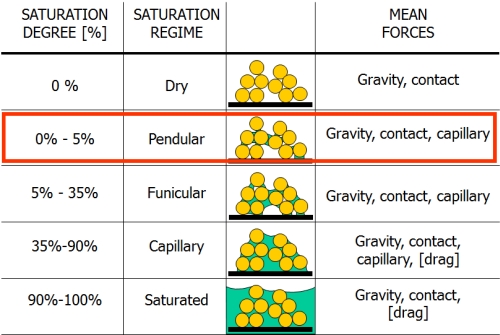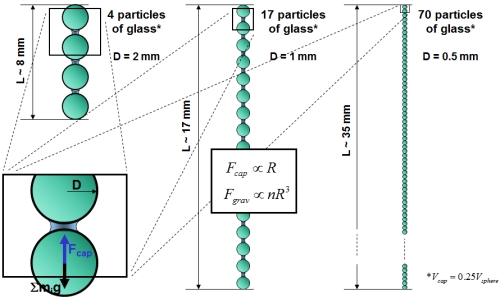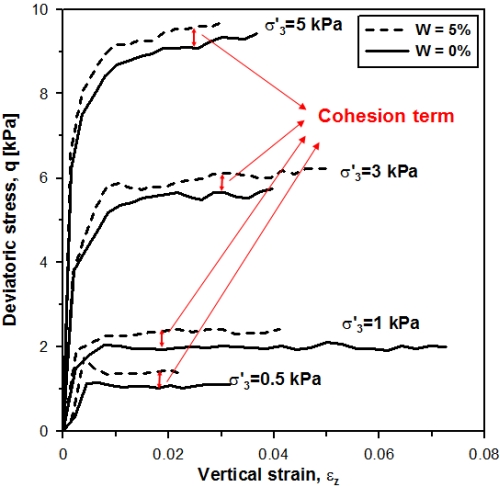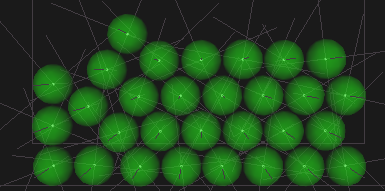Soil saturation conditions can be classified into 5 states as a function of the water content (Table 1): completely dry, pendular state, funicular state, capillary state and completely wet (Newitt & Conway-Jones, 1958). For each regime, a set of micromechanical forces rules the bulk behaviour of the granular material.

From a micromechanical point of view, the pendular state in a granular soil increases the shear strength because of the surface tension of liquid forming the meniscus among grains. It may leads to intense attraction forces in comparison with gravitational forces (Figure 1) and repulsive contact forces (Figure 2). These are functions of the particle size, the capillary volume, the adhesion properties . It also causes an important decrease of the pore water pressure that can reach very high negative values.

The pendular state occurs in a lot of soil and many natural granular slopes that in many circumstances exceed their natural slope angles. Taking a soil sample on a slope, for instance, one can easily observe that the natural water content is very low but above zero. On the other hand, the saturation degree of shallow soils changes continuously during days and seasons in adaptation to atmospheric conditions and leading to variation of slope stability.

These soils may show very catastrophic behaviour when subjected to wetting or drying: for example, if the soil is subjected to intense and long rains, the original bonds among particles break causing the detachment of shallow thick layers (0.1 – 3 m).
Discrete Element Method (DEM) is suitable for the reproduction of macroscopic behaviour of wet granular material from the physical description of the micromechanics at the contact. The dry contact parameters were obtained by calibration of drained isotropically consolidated triaxial tests on monosized glass ballotini with R = 1 mm (Figure 3).

Wet numerical triaxial tests were reproduced using different water contents and at low confining pressures. A general increase of shear strength with water addition can be noted, and this effect decreases with the stress level (Figure 4). Other shear tests were performed with glass balls and carbonate particles at different moisture content .


